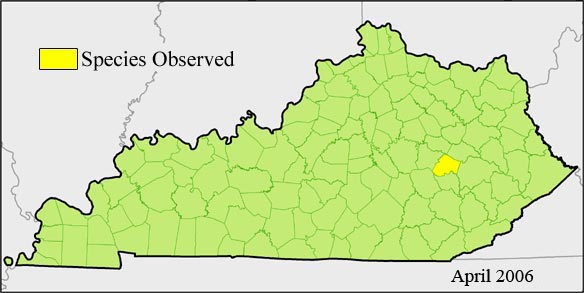|
Habitat:
Dry oak-hickory woods and clearings. Also in acid soils of sandstone or chert areas (Steyermark 1975). In KY, sandstone slopes, slightly damp (per J. Campbell).
|
Species Description:
Cespitose perennial from short rhizomes growing in dense low tufts; stems slender, erect, scabrous on the 3 angles; leaves several, the lower bladeless, the upper elongate,often surpassing the stem, to 1.5 mm wide (sometimes wirey). There only one terminal spikelet that is ovoid and having a sharp, slender point equaling or surpassing the spikelet. The sheaths at the base of the plant are weathered, shredded, and light brown to reddish-brown in color. There are several leaves, which are dark green, shiny, 1-2 mm wide, and flat (adapted from Gleason and Cronquist 1991).
|
Phenology:
Flowering Period: Early April to mid June.
Fruiting Period: Early May to late June.
|
Additional Information at NatureServe
|
Diagnostic Characteristics:
The solitary terminal spikelet distinguishes this species from most other bulrushes. It differs from Eleocharis in that a swollen style-base is absent and it has many flat leaves. The culms are distinctly triangular and are scrabrous on the edges. This species may be confused in the field with C. emmonsii and C. pensylvanica which grow in similar habitat and appear vegetatively similar .
|
Management:
The habitat for this species is especially sensitive to changes in hydrology and not likely to withstand much alteration. Grazing or browsing pressure, vegetation removal, hydrologic changes (i.e. stream alterations road construction) would be detrimental.
|
Global Range:
Trichophorum planifolium (=Scirpus verecundus) occurs from Massachusetts west to Ontario and south to Virginia and Kentucky, with disjunct occurrences in Missouri and southern Illinois.
|
Known Kentucky Occurrences:

|